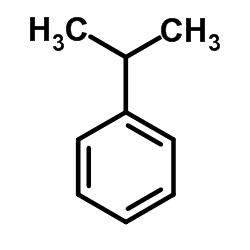The lactic acid stinging test predicts susceptibility to cumulative irritation caused by two lipophilic irritants.
Sibylle Schliemann, Dimitar Antonov, Nicole Manegold, Peter Elsner
文献索引:Contact Dermatitis 63(6) , 347-56, (2010)
全文:HTML全文
摘要
Skin exposure to lipophilic irritants at workplaces is a risk factor for the development of occupational irritant hand dermatitis. Suitable lipophilic model irritants to be used in repeated irritation studies in volunteers are needed to gain a better understanding of the chemical-dependent mechanisms of skin irritation.To investigate acute and cumulative irritation elicited by two new lipophilic model irritants, octane (CAS No. 111-65-9) and cumene (CAS No. 98-82-8), in stingers as compared with non-stingers.Short-time occlusive and repetitive occlusive irritation patch tests were performed over 5 days with octane and cumene in two groups of healthy volunteers (n = 15 each) who were classified as stingers and non-stingers according to a preceding lactic acid stinging test. Acute and cumulative irritation was quantified using clinical assessments and bioengineering methods (laser Doppler flowmetry, transepidermal water loss, capacitance measurements, and skin colour reflectance).Significantly stronger cumulative irritation was observed in stingers than in non-stingers for both irritants (visual scoring, stratum corneum hydration, and skin colour reflectance).The preliminary results suggest the existence of a distinct sub-population with increased susceptibility to cumulative irritation induced by lipophilic irritants that can be identified by the lactic acid stinging test.© 2010 John Wiley & Sons A/S.
相关化合物
| 结构式 | 名称/CAS号 | 分子式 | 全部文献 |
|---|---|---|---|
 |
异丙基苯
CAS:98-82-8 |
C9H12 |
|
Activities of Alkyl Hydroperoxide Reductase Subunits C1 and ...
2014-12-01 [Appl. Environ. Microbiol. 80(23) , 7398-404, (2015)] |
|
QSPR modeling of octanol/water partition coefficient for vit...
2008-04-01 [Eur. J. Med. Chem. 43 , 714-40, (2008)] |
|
Energy transfer between amphiphilic porphyrin polymer shells...
2015-02-28 [Org. Biomol. Chem. 13(8) , 2317-22, (2015)] |
|
Styrene maleic acid micelles as a nanocarrier system for ora...
2015-01-01 [Int. J. Nanomedicine 10 , 4653-67, (2015)] |
|
Attenuation of Oxidative Damage by Boerhaavia diffusa L. Aga...
2016-01-01 [J. Diet. Suppl. 13 , 300-12, (2015)] |